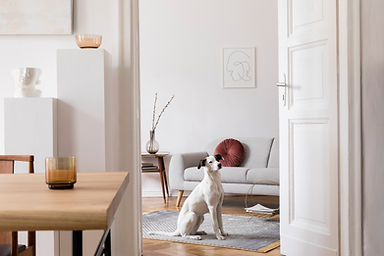
CALL US TODAY
(905) 995-4401
WAYS TO PREPARE FOR PAINTING
Planning and Preparation:
-
Decide on the scope of your painting project. Are you painting one room, several rooms, or the entire house? Determine the colours and finishes (e.g., matte, satin, semi-gloss) you want to use.
-
Gather the necessary supplies, including paint, primer, brushes, rollers, drop cloths, painter's tape, paint trays, and stir sticks.
-
Clear the space you plan to paint by removing furniture, wall decorations, and fixtures. Cover or move large items that cannot be removed.
Surface Preparation:
-
Before applying paint, it's essential to prepare the surfaces properly. This typically involves:
-
Cleaning the walls to remove dirt, dust, and grease. Use a mild detergent and water, and allow the walls to dry thoroughly.
-
Patching any holes, cracks, or imperfections in the walls with spackling compound or filler. Sand the patched areas smooth once they are dry.
-
Sanding existing paint or varnish to create a smooth, even surface. This step is crucial for paint adhesion.
-
Removing any loose or peeling paint.
-
Priming:
-
Apply a coat of primer to the prepared surfaces if necessary. Primer helps the paint adhere better and can cover stains or dark colors. It also creates a uniform surface for the paint.
Painting:
-
Start by cutting in the edges of the walls, ceiling, and corners with a brush. This helps create clean lines where the roller can't reach.
-
Use a roller to apply paint to larger wall areas. Be sure to roll evenly and in one direction to avoid streaks.
-
Apply additional coats as needed, allowing each coat to dry thoroughly between applications. Most projects require at least two coats for optimal coverage and color saturation.
Clean-Up:
-
After finishing the painting, clean your brushes, rollers, and other tools with the appropriate cleaning agents. Dispose of used paint cans and materials according to local regulations.
-
Remove painter's tape while the paint is still slightly wet to prevent it from peeling off with the tape.
Inspect and Touch-Up:
-
Once the paint has dried completely, inspect the painted surfaces for any imperfections or areas that need touch-up. Address any issues promptly.
Reassemble and Decorate:
-
After the paint has cured, return furniture and decorations to their original positions. Enjoy your newly painted space.
It's important to take your time and pay attention to detail when painting your home to achieve professional-looking results. Proper surface preparation and high-quality materials are key to a successful painting project. Consider factors like weather conditions and ventilation, especially when painting exterior surfaces or rooms with limited airflow.










